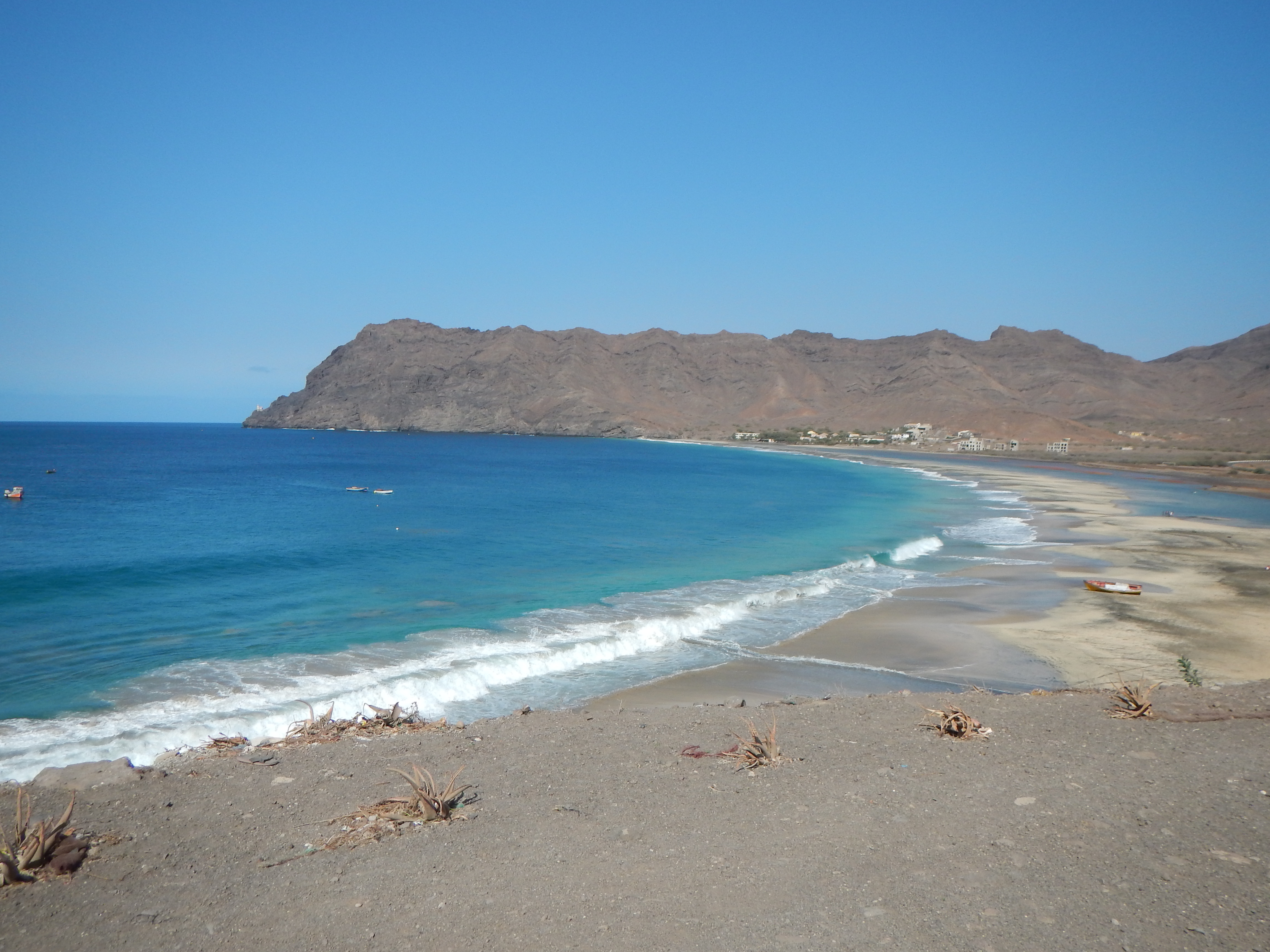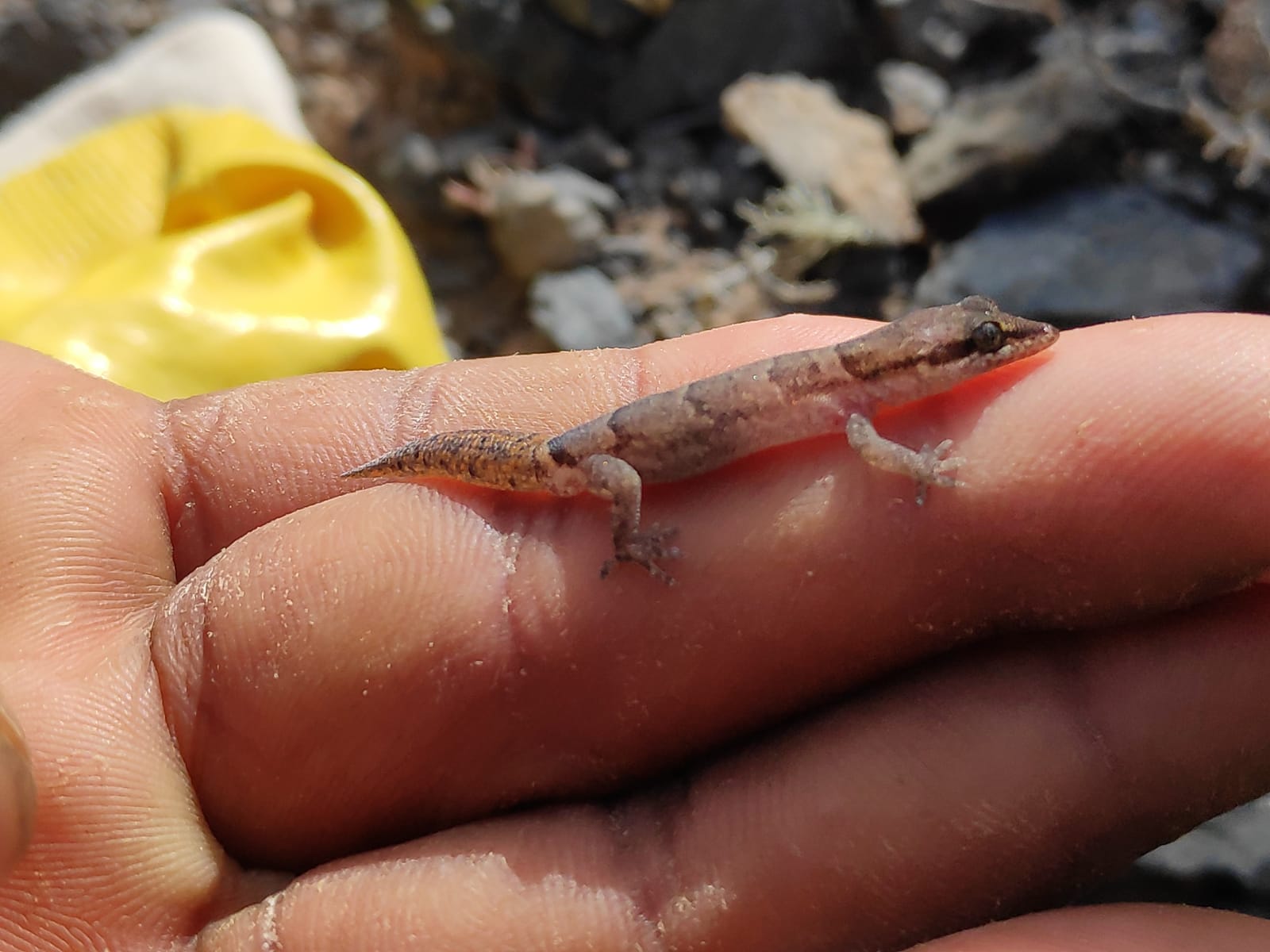
Four new individuals of the gecko species Hemidactylus bouvieri rediscovered in Cape Verde, on the Santa Luzia island !
Published on 12 July 2023During their last mission in March 2023, teams from the NGO BIOSFERA and international technicians carried out several studies and located four new individuals of the gecko species Hemidactylus bouvieri in the Santa Luzia Nature Reserve in Cape Verde.
Island ecosystems are extremely fragile, and the introduction of invasive species can completely upset the ecological balance and lead to the extinction of species, or even entire groups of biodiversity. This is exactly what has happened on the island of Santa Luzia, the largest land area in the nature reserve.
The introduction by man of invasive species such as cats and rats, as well as the extensive use of livestock, has had a negative impact on many marine birds and terrestrial reptiles, which have abandoned the island or been eaten, leading to a reduction in their population and, in some cases, the extinction of the species. In the specific case of reptiles, both in island systems and in other less fragile habitats, the presence of cats can have devastating effects on their populations.
There are currently four species of terrestrial reptile in the Desertas (the name of the Santa Luzia nature reserve). Doubts remain as to the presence of a fifth species, classified as extinct, but which has been observed recently (Giant lizard – Chioninia coctei). In the specific case of the island of Santa Luzia, there are two species of geckos (Tarentola raziana and Hemidactylus bouvieri) and one species of lizard (Chioninia stangeri).
Taking into account recent studies carried out by groups of Portuguese researchers, national students and Biosfera technicians, it can be said that the populations of two of the species present on the island (Chionina stangeri and Tarentola raziana) are stable and have not suffered any devastating impact on their populations from invasive species. However, the effects on the Hemidactylus bouvieri population are not yet entirely clear.
In the last ten years, a single individual of Hemidactylus bouvieri has been found on the entire island, leading us to believe that the species may be on the verge of extinction on the island. Generally speaking, this species is considered to be critically endangered according to the criteria of the International Union for Conservation of Nature (IUCN) and according to Cape Verde’s first red list. In Santa Luzia, its distribution seems to be limited to higher areas, at altitudes of around or above 200 metres, and with slightly more humidity, where the endemic tortolho shrubs (Euphorbia tuckeyana) are found. It was in these conditions that the last individual of Hemidactylus was found in 2012, the last mission to date by the Biosfera organisation.
In March 2023, OSC teams returned to the field as part of the “Sustainable management and monitoring of threatened species and vulnerable ecosystems in the Santa Luzia Reserve” project, funded by the PPI. A total of 4 new Hemidactylus individuals were found, in the same biogeographical conditions described above.
This recent rediscovery, and the fact that invasive species such as cats and rats have been controlled/eradicated from the island in recent years, gives the organisation hope for the survival of the species. In the coming years, the teams will continue to explore the island and study this small population and any others that may emerge in the future.
